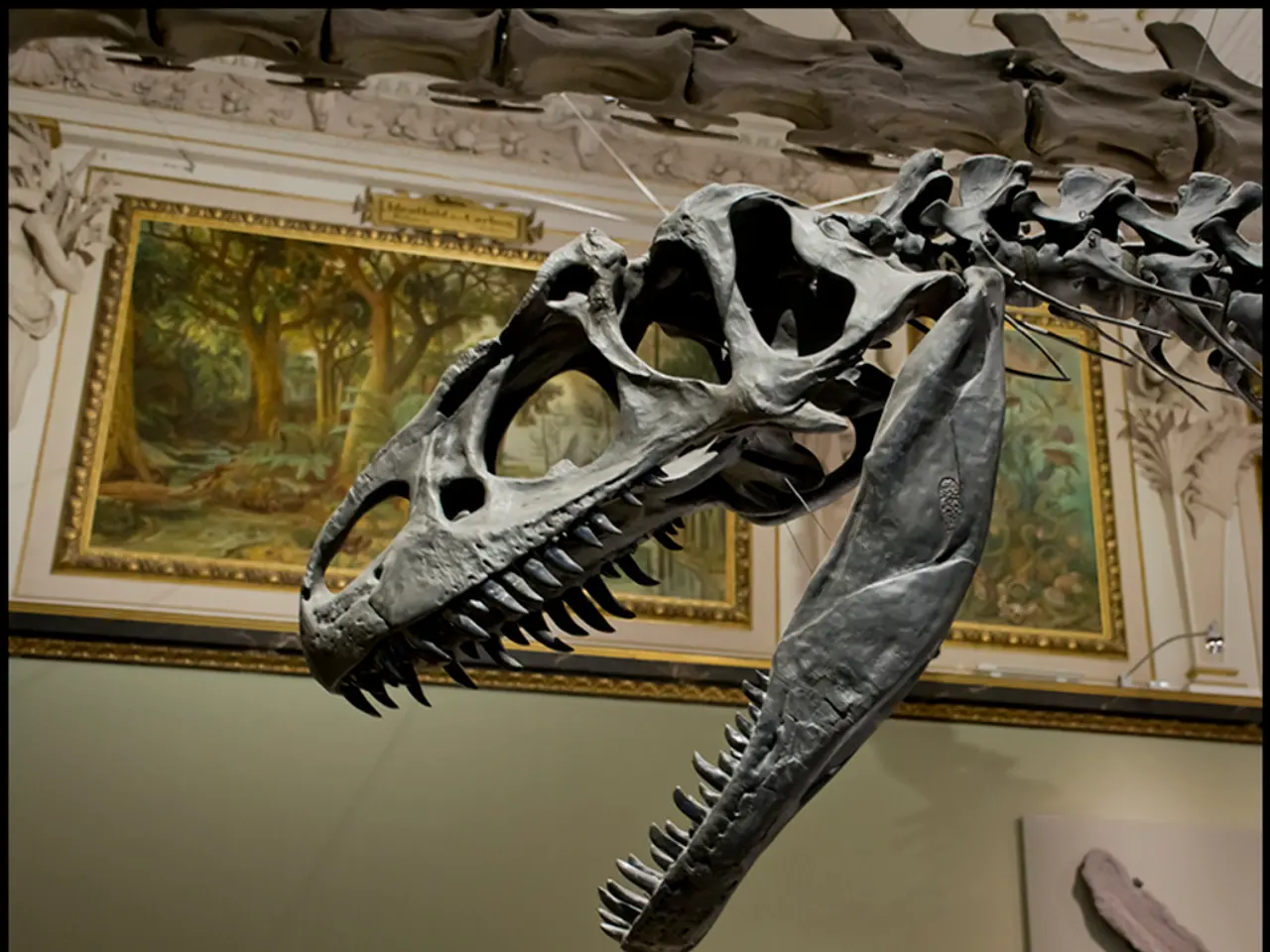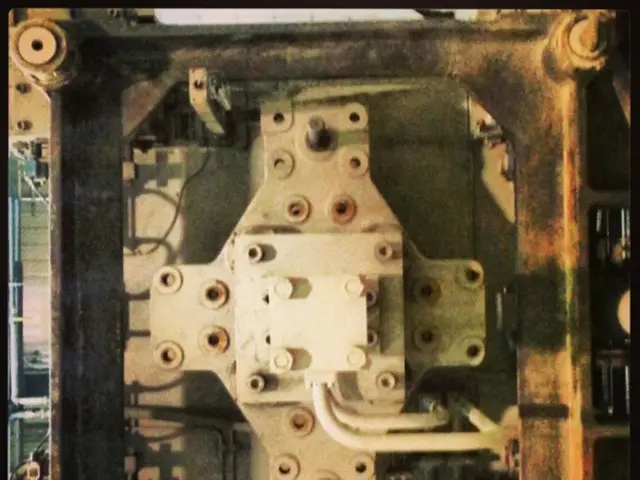Discovering Old Hemoglobin in 70 Million-Year-Old Dinosaur Remains by Scientists
In a groundbreaking discovery, scientists have confirmed the presence of hemoglobin remnants in the bones of Brachylophosaurus canadensis and Tyrannosaurus rex. This revelation, published in the Proceedings of the Royal Society A, sheds light on the mystery of how certain biological molecules can survive for millions of years, even in the harsh conditions of the fossilization process.
The study, led by Mary H. Schweitzer's laboratory, employed Resonance Raman (RR) spectroscopy, an advanced form of Raman spectroscopy, to detect hemoglobin residues. This technique uses light waves to identify a molecule's energetic 'fingerprint,' providing a distinct signature that reveals a molecule's identity and structure.
RR spectroscopy took this process a step further by using light that is specifically tuned to resonate with the molecule of interest. This allows scientists to isolate specific molecules within a fossilized sample, amplifying the signal of interest to the point where it can be clearly detected and analyzed.
The RR spectroscopy confirmed that the heme is present and still bound to the hemoglobin protein in the dinosaur fossils. This observation suggests that some components of hemoglobin, particularly the iron-containing heme structure, can survive in fossils by binding with minerals, potentially aiding in long-term preservation.
One such mineral is goethite, a mineral crystal that forms from biological action and can bind to and stabilize protein fragments. Goethite, a mineral that forms in iron-rich environments, plays a role in stabilizing hemoglobin remnants over millions of years.
Understanding the role of goethite in preserving biological molecules could help scientists unravel the mystery of how certain molecules, like hemoglobin, can persist through time. The degradation of hemoglobin can interact with environmental factors, contributing to the preservation of the molecule in the fossil record.
Heme, the iron-containing component of hemoglobin, can form a bond with goethite, a mineral that results from iron oxidation. The discovery that goethite can bind to and stabilize protein fragments is a key insight into the fossilization process.
The findings reveal how the degradation of hemoglobin can be influenced by the formation of goethite on the iron within hemoglobin. This observation suggests that some components of hemoglobin can survive in fossils by binding with minerals, potentially aiding in long-term preservation.
The study also confirmed that the hemoglobin remnants found in dinosaur fossils were authentic and not the result of contamination. The persistence of hemoglobin and other biological molecules raises questions about the factors that enable some molecules to survive for millions of years, even in the harsh conditions of the fossilization process.
This discovery opens up new avenues for research into the fossilization process and the long-term preservation of biological molecules. Further study could help us better understand the role of minerals in the fossilization process and potentially lead to new methods for preserving biological specimens.
Read also:
- Exploring Harry Potter's Lineage: Decoding the Enigma of His Half-Blood Ancestry
- Gold nanorod market to reach a value of USD 573.3 million by 2034, expanding at a compound annual growth rate (CAGR) of 11.7%
- Cambrian Era Fossil Find: Mysterious Five-Eyed Creature Revealed
- Researchers Unveil the Route to Element 120, the coveted prize in the realm of chemistry








